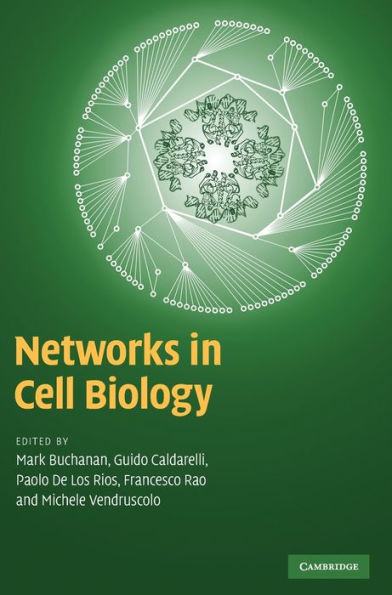Table of Contents
List of contributors viii
Introduction M. Buchanan G. Caldarelli P. De Los Rios F. Rao M. Vendruscolo 1
1 Network views of the cell Paolo De Los Rios Michele Vendruscolo 4
1.1 The network hypothesis 4
1.2 The central dogma and gene regulatory networks 5
1.3 Protein-protein interaction networks 7
1.4 Metabolic networks 9
1.5 Signaling networks 11
1.6 Networked networks and cell functionality 12
1.7 Concluding remarks 13
2 Transcriptional regulatory networks Sarath Chandra Janga M. Madan Babu 14
2.1 Introduction 14
2.2 Transcriptional regulation in prokaryotes and eukaryotes 19
2.3 Structure of transcriptional regulatory networks 20
2.4 Evolution of transcriptional regulatory networks 25
2.5 Dynamics of transcriptional regulatory networks 29
2.6 Conclusions 34
3 Transcription factors and gene regulatory networks Matteo Brilli Elisa Calistri Pietro Lió 36
3.1 Introduction 36
3.2 Promoters' complexity/eukaryotic gene promoters 37
3.3 Transcription factors 41
3.4 Bioinformatics of regulatory networks 46
4 Experimental methods for protein interaction identification Peter Uetz Björn Titz Seesandra V. Rajagopala Gerard Cagney 53
4.1 Introduction 53
4.2 Protein complementation techniques 57
4.3 Affinity purification methods 62
4.4 Protein complex purification and mass spectrometry 65
4.5 Protein and peptide chips 73
4.6 Other methods for interaction detection and functional analysis 74
4.7 Quality of large-scale interaction data 75
4.8 Comparison of methods 77
4.9 Conclusions 80
5 Modeling protein interaction networks Francesco Rao 83
5.1 Introduction 83
5.2 Scaling laws and network topology 85
5.3 Predicting protein interactions 87
5.4 Towards models at an atomic level of resolution 88
5.5 Concluding remarks 90
6 Dynamics and evolution of metabolic networks Daniel Segrè 93
6.1 Introduction 93
6.2 Cellular metabolism and its regulation 93
6.3 Metabolism across disciplines 96
6.4 Dynamics of a metabolic system 98
6.5 Stoichiometric analysis 100
6.6 Constraint-based modeling: feasible states and optimality 103
6.7 Predicting genetic perturbations 108
6.8 Double perturbations and epistatic interactions 109
6.9 The ancient history of metabolism: from cell-scale to biosphere-scale 112
6.10 Conclusions 116
7 Hierarchical modularity in biological networks: the case of metabolic networks Erzsébet Ravasz Regan 117
7.1 Introduction 117
7.2 Modularity and hubs in biological networks 119
7.3 Scaling of the clustering coefficient: a signature of hierarchy 121
7.4 Method for finding network modules 123
7.5 A case study: the E. coli metabolic network 126
7.6 Hierarchy, fractality and the small world of networks 131
7.7 Conclusions 134
8 Signalling networks Gian Paolo Rossini 135
8.1 Introduction 135
8.2 Chemical signalling: many pathways following a few general themes 136
8.3 Cross-talks among signal transduction pathways 159
8.4 Signalling networks, system organization and modelling 166
8.5 Conclusions and outlook 169
Appendix A Complex networks: from local to global properties D. Garlaschelli G. Caldarelli 170
Appendix B Modelling the local structure of networks D. Garlaschelli G. Caldarelli 188
Appendix C Higher-order topological properties S. Ahnert T. Fink G. Caldarelli 210
Appendix D Elementary mathematical concepts A. Gabrielli G. Caldarelli 219
References 235
Index 269




